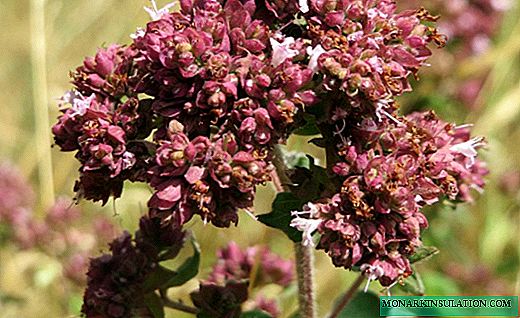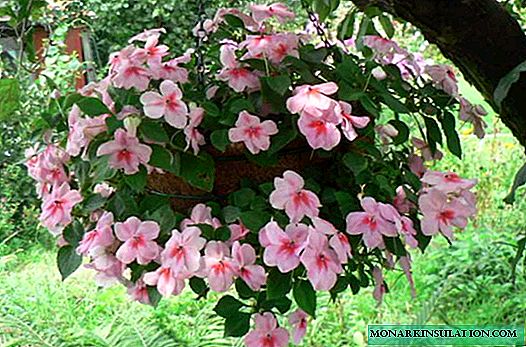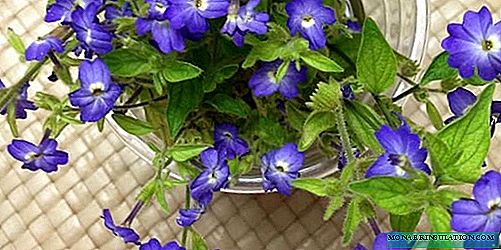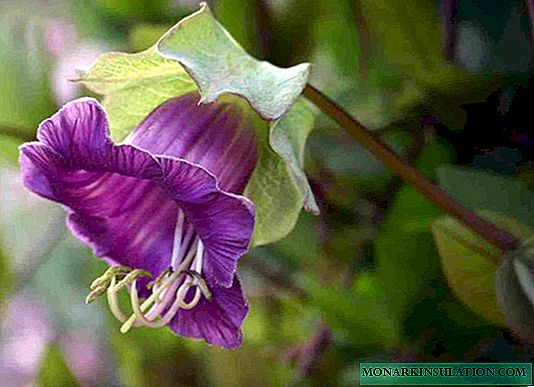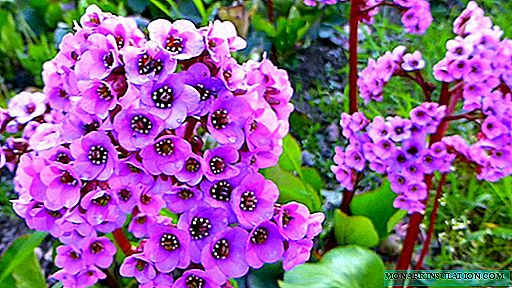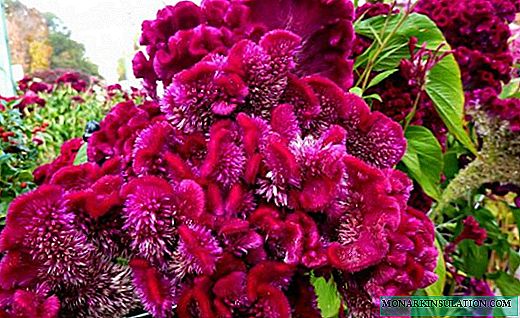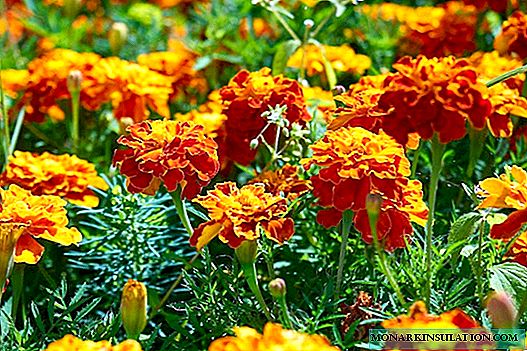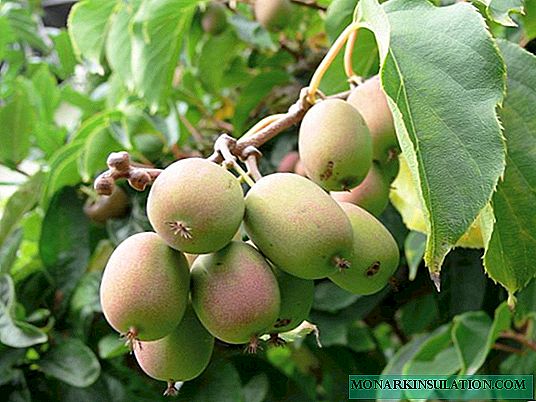
Actinidia is a thermophilic fruiting vine. Few people know that this plant is capable of developing not only in warm climates. Actinidia grows splendidly on the windy expanses of the Urals and the cold territories of Siberia. Our country got acquainted with these vines in the 19th century, at least, historical sources date back to this century. In those days, actinidia was bred mainly in the south of Russia and in the suburbs. Actinidia are now successfully grown in various climatic zones for both garden decor and fruit picking.
Is it possible to grow actinidia in Siberia
Actinidia (some varieties) is familiar to us with its juicy fruits, similar to kiwi. Now these berries can be found in any store, supermarket or market. But few know her as a vine, decorating the facades of houses and pergolas in the gardens. For some reason, it is believed that actinidia, which is a native of Southeast Asia, can grow and bear fruit only in a warm climate. In fact, this is nothing more than a myth. Actinidia is a self-fertile plant, the flowers of which are divided into female and male. Distinguishing them is quite simple. Female flowers grow singly, male flowers form groups of 3-4 inflorescences.
Video: how to recognize female and male flowers
Despite the fact that the summer temperature in Siberia reaches +25 degrees, the sun is more active than, for example, in Sochi. Therefore, actinidia is planted mainly in shaded areas. The plant is less susceptible to frost in this region than other crops. It depends on the fact that the foliage appears on the vine quite late. If some branches still freeze, instead, the plant releases several new shoots.
Of course, in Siberia, as in every single region, the cultivation of horticultural crops requires a special approach to planting, growing and caring, taking into account the peculiarities of the climate.
Varieties of actinidia for growing in Siberia
Heat-loving actinidia prefers a mild climate. But there are hardy varieties of different breeds of actinidia colomict, which can grow and bear fruit in Siberia. Currently, more than 30 varieties of actinidia colomict are registered in the state registry. Since 1908, scientists have been working on the cultivation of species that can grow and bear fruit in difficult climatic conditions.
Actinidia breeding I.V. Michurina
- Pineapple Michurin Actinidia. This is a winter-hardy vine belonging to the varieties of early ripening. Begins to bear fruit in early August. Fruiting is stretched. From one bush you can collect up to 5 kg of berries. It is considered a high-yielding type. The fruits of Pineapple actinidia are cylindrical, slightly flattened laterally, weigh from 2.3 to 3.5 g.
- Actinidia Clara Zetkin. It is medium resistant. The fruits ripen late. The weight of one berry varies from 1.5 to 3.5 g. The shape of the fruit is cylindrical, the color is yellowish-green. From one bush you can collect up to 2.6 kg.
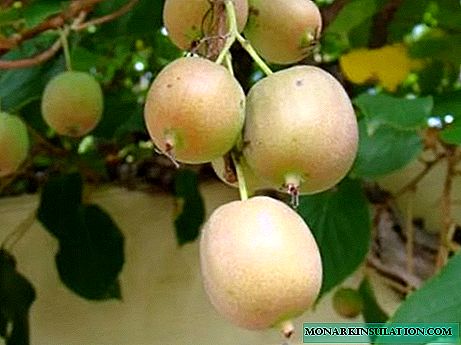
The fruits of actinidia cultivar Klara Zetkin have a yellow-green color
Selection of the Moscow branch of VNIIR
- Sakhalin-23. This is a winter-hardy actinidia. Liana is considered undersized. Refers to varieties of early ripening. Begins to bear fruit in early August. Fruits of green color with longitudinal light strips. The weight of one berry ranges from 1 to 1.5 g. Light astringency gives the berries a unique taste, especially in combination with a honey aroma.
- University. Winter-hardy vine of medium ripening fruit. The berries are saturated green in color with longitudinal stripes, slightly ribbed, with a unique luster of the skin. Appearance remotely resembles gooseberries. Sweet, almost sugar fruits with a light citrus aroma. The yield of this variety cannot be called high - 0.7-0.8 kg from one bush.

The fruits of actinidia of the Universitetskaya variety are reminiscent of gooseberry berries in color
- GF 17/9 is a stunted vine. It is winter-hardy, the fruiting period is late. Like Universitetskaya, it has a green color with bright stripes. The mass of one fruit varies from 1.5 g to 2.4 g. The berry has a weak strawberry flavor. From one bush you can collect up to 1800 grams.
- Backyard Actinidia. It is considered a relatively winter-hardy variety. It delights gardeners with early ripening. The elongated cylindrical shape of the berries can reach 3.5 g. The taste of fruits is sweet and sour. When overripe, the berries tend to crumble. The yield of this variety is average, up to 2 kg from one bush.

Variety Actinidia Homestead has an average yield
Novosibirsk selection
The Novosibirsk selection includes hybrid varieties. They have high winter hardiness. They are distinguished by excellent decorativeness. They are characterized by early ripening of fruits. All hybrids of this selection belong to the elite form.
- Snowball Actinidia pollinator. Medium-sized, abundantly flowering vine.
- Compact actinidia. The bush is medium-sized. The fruits are dark green in color, cylindrical in shape. But among them there are also “flat” specimens. The weight of one berry is from 2 to 3.9 g. The fruits are sweet, with a light banana flavor. The variety is considered high yielding. From one bush you can collect up to 4 kg of berries.
- Borisovskaya. Vigorous bush. The flowers are female. The fruits of the olive color, when overripe, are very showered. Differs in excellent productivity - up to 4.5 kg from one bush.
- Novosibirsk early. Multi-stemmed bush with dense foliage. Actinidia flowers of both sexes. The fruits are yellow-green. The shape can be either cylindrical or pear-shaped. The weight of one berry ranges from 1.7 to 2.4 g. The yield of this variety is very high - up to 7 kg from one bush.

Among gardeners, actinidia of the variety Novosibirskaya early is also called "polygamous"
Actinidia planting in Siberia
Actinidia is bought by seedlings in markets, in horticultural centers or in garden shops. When buying, it is necessary to check with the seller the sex of the plant, so as not to purchase a pollinator instead of a fruiting vine. It is also important to pay attention to the roots. A seedling with dried or damaged roots is unlikely to take root. It is easier to plant plants planted in containers.
Gardeners prefer seedlings, since planting and growing actinidia from seeds takes a long time. To collect the first crop from a vine planted with seeds will work only for the 5-6th year.
In Southeast Asia, a liana grows in forests. But this does not mean that in the infield it needs to be planted among thickets of trees. Actinidia does not like the absence of light, but an excess of sunlight can be harmful to it. The landing site must be protected from drafts.
The plant prefers fertile soils with a layer of humus. Actinidium will be able to grow in vitamin-depleted areas, but such a soil will reduce the yield of lianas.
To plant a liana, it is necessary to dig a planting hole with a depth of 50-60 cm. Initially, a mixture of humus and turf (or chernozem) is poured. You can add to the humus 1 tbsp. l superphosphate. When applying phosphate fertilizer, it must be mixed with the soil, so as not to burn the roots. Then a plant descends into the pit. Sprinkled with fertile soil. After planting, actinidia must be abundantly watered. The ground around actinidia should be moist, but not moist, as the liana does not like an excess of moisture. Then the soil around the plant is mulched with peat, straw, wood chips or sawdust. Fertilizers are applied to the ground in autumn and spring.
Video: how to plant actinidia
Features of cultivation and care
Actinidia, although unpretentious, but requires some care. For example, in the first 2-3 years after planting, the plant must be removed from the trellis, covered with straw, leaves, hay, garden film for the winter. Instead of a film, you can use agricultural bags. This is done in order to protect the vine from freezing.
But not only frosts harm plants. Pets are not averse to feasting on young shoots. Therefore, it is worthwhile to make sure that cats and dogs do not have access to seedlings. You can fence actinidia with a plastic or metal mesh.
When weeding actinidia, it should be borne in mind that the root system of the plant does not go deep into the ground. In view of this, you need to carefully loosen the soil on the surface. This will provide air access to the roots and prevent cracking of the soil.
Shanking actinidia
In mid-July, cuttings can be carried out. A non-lignified stem is selected. It is cut off for 2-3 kidneys. Of the leaves, only the top ones remain. Lower leaves must be cut. Cuttings are planted at an angle to sandy soil. In order for the plants to take root and begin to actively develop, you need to abundantly pour actinidia and cover the beds with a garden film. This creates a greenhouse effect. Within 2-3 weeks, the liana takes root in a new place. After this time, greenhouses can begin to open in cloudy weather so that the plants gradually adapt. Cuttings after planting are sprayed 3-4 times a day to keep moisture inside the greenhouse. As the vine grows, watering should gradually decrease.
Video: actinidia grafting, care features
Plant nutrition and pruning
Liana is fed 2 times a year: in spring and autumn. Before the onset of cold weather, organic fertilizers and potassium salt are added to the soil. Since actinidia is sensitive to chlorine contained in potash fertilizer, the dosage should be reduced. Instead of the instructions specified 30-40 g per 1 m2 10-20 g are introduced.
Complex fertilizers containing phosphorus and nitrogen are introduced into the soil in spring. Such fertilizers include: Ammophos, Good Strength, Slox-eco, Flower happiness and others. You can buy them in garden centers, markets and online. The cost varies from 75 to 390 rubles.

Diammofosk complex fertilizer with nitrogen and phosphorus is suitable for feeding actinidia in spring
Trimming actinidia is best done in September and October. Secateurs remove old branches of the creeper. It is better to cut them in parts - so it will be easier to pull them out of the trellis. It is worthwhile to carefully examine the actinidia for damaged stems. Crossing branches are also cut to provide adequate ventilation between the stems. Cut branches are immediately removed.
Video: how to trim actinidia
Actinidia diseases in Siberia
This liana rarely gets sick. With proper care, actinidia actively develops and bears fruit. Nevertheless, sometimes these plants are exposed to such diseases:
- powdery mildew;
- damage to the plant by fungi;
- fruit rot.
Experts advise to remove the branches damaged by diseases and burn to prevent the spread of the disease. For the prevention of diseases, it is necessary to spray plants with 1% Bordeaux liquid after the appearance of buds on the vine. To destroy powdery mildew, you need to spray actinidia with a 0.5% solution of soda ash. After 8-10 days, you must repeat the procedure.
Gardeners reviews on the cultivation of actinidia
Actinidia has been growing for a long time. The berries are very tasty. They are yellowish-greenish, but not sour. I have high acidity. For example, I can’t eat a lot of black currant, but as many actinidia as I like. The only thing I do not like is that she gives back the crop gradually. It is necessary to lay a film under the bush, as ripe berries fall down. It has very beautiful leaves, half pink, half white. In the middle of summer there is such a beauty.
Orina
//www.bolshoyvopros.ru/questions/1823909-aktinidija-otzyvy-kto-sazhal-chto-eto-za-rastenie.html
I only planted a couple of “girl” and “boy” this year. This is a dioecious vine. I tried it - I liked it. Cats love her very much. Therefore, the first three years must be fenced, because they will nibble.
Hope 129
//www.bolshoyvopros.ru/questions/1823909-aktinidija-otzyvy-kto-sazhal-chto-eto-za-rastenie.html
A few years ago I bought Actinidia colomict in Finland, I was assured that the plant is self-fertile (there is one under the name Annikki). However, in reality it turned out that they had slipped me a man. And I realized this only this year (although there were doubts before) when I bought the second Annicki. After the appearance of flowers on both plants, I compared them .... Fortunately for me there is no limit. May be able to try this year.
Tatyana
//forum.homecitrus.ru/topic/305-aktinidii-actinidia-kolomikta-arguta-vse-krome-kivi/page-5
And in our North, she tolerates winter without shelter and cold rainy summer, and at the same time bears fruit ...
Nina Nikolaevna
//forum.homecitrus.ru/topic/305-aktinidii-actinidia-kolomikta-arguta-vse-krome-kivi/page-5
Actinidia refers to those plants that are pleasing and decorative, and delicious fruits. With proper care and compliance with simple rules, this vine can grow in different regions of the country. And Siberia is no exception. More and more gardeners and gardeners are exploring new cultures with interest and perseverance. We hope that our advice will help in this difficult, but extremely entertaining business.





